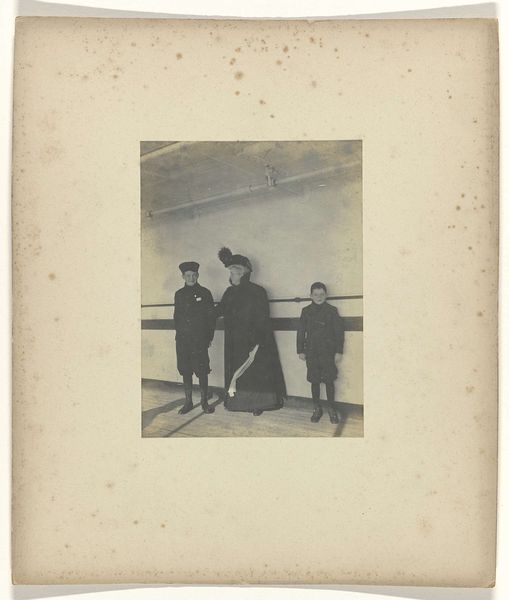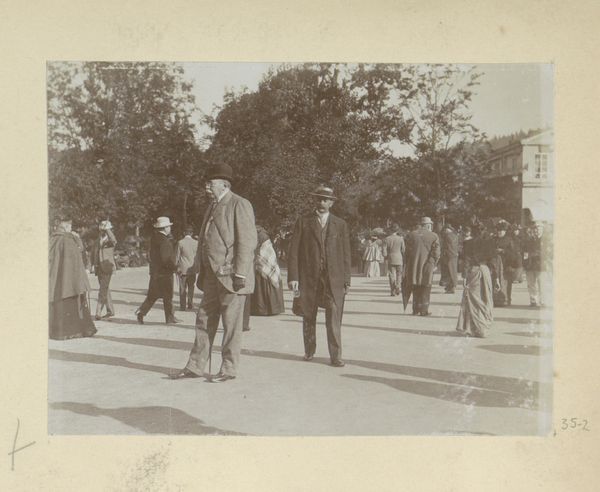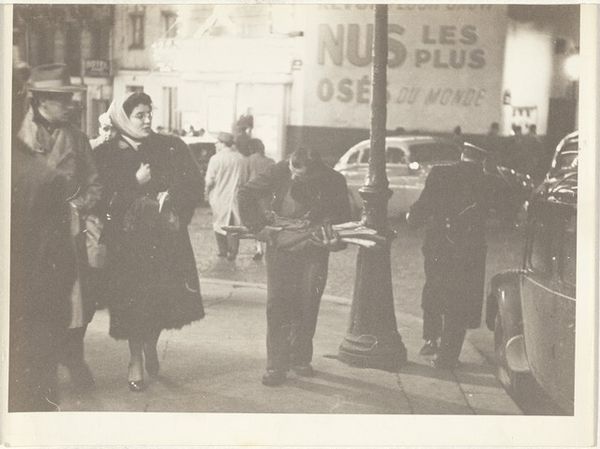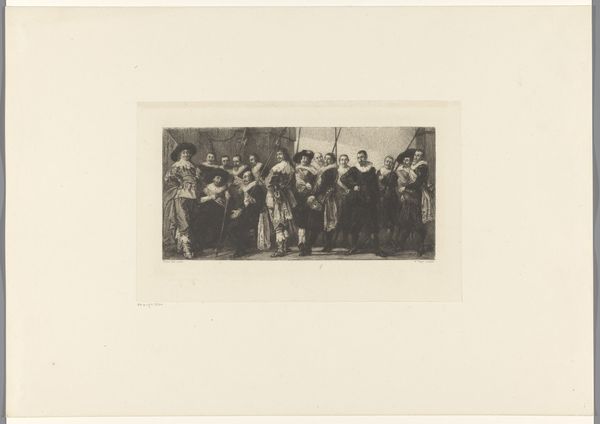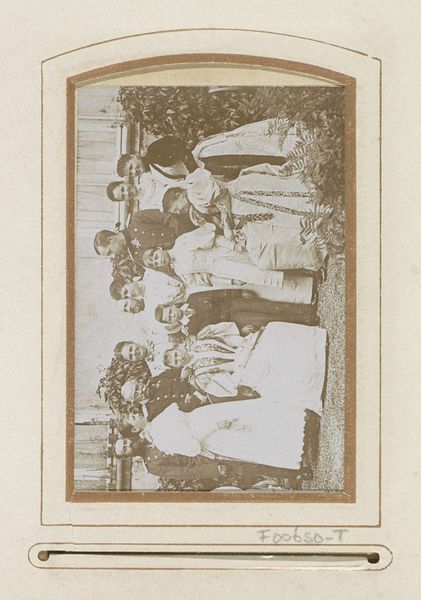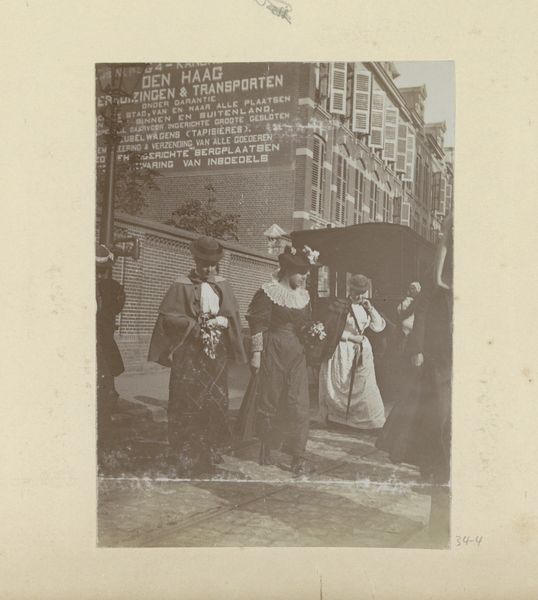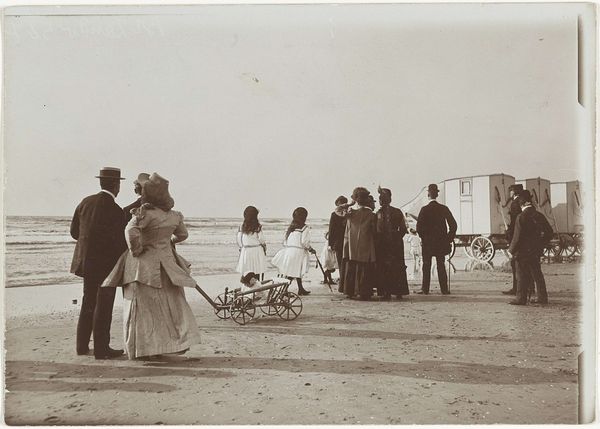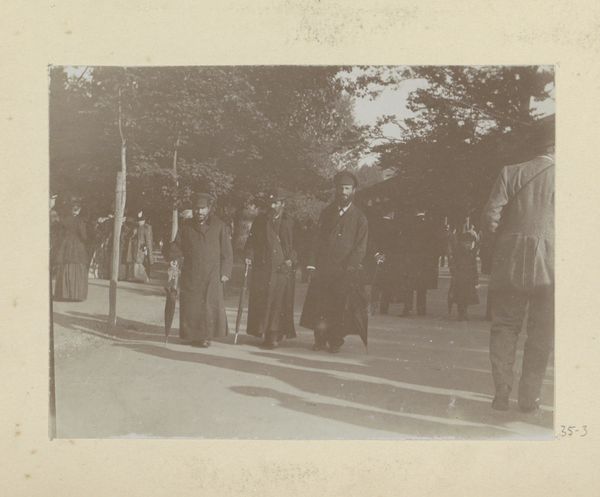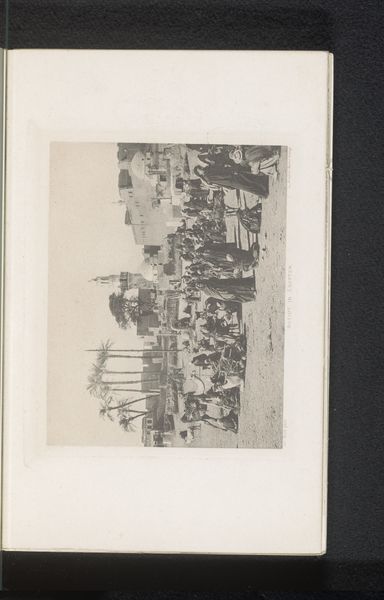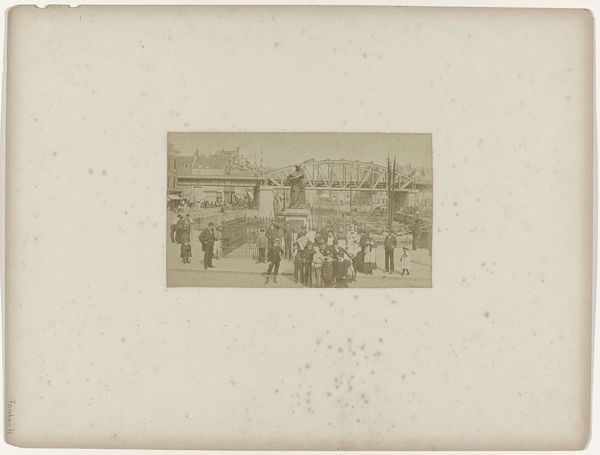
Dimensions: height 100 mm, width 100 mm, height 259 mm, width 365 mm
Copyright: Rijks Museum: Open Domain
Editor: This photograph, "Groep kinderen spelend op muziekinstrumenten," was taken in 1898 by Henry Pauw van Wieldrecht. The monochromatic image captures a group of children with musical instruments, but something about the setting near the water feels a bit melancholic despite the instruments. What story do you think this image is trying to tell? Curator: That's a great observation! Looking at this photograph through a historical lens, I’m immediately drawn to the complex interplay of social representation. Here we have these children, possibly positioned as performers – are they street musicians? Is this performance staged? Considering the socio-economic context of the late 19th century, especially near a port, we might be looking at a depiction of marginalized communities using music for survival. How does the presence of what appears to be a wealthier audience in the background shape your understanding? Editor: That’s a really interesting point! I hadn't considered the implied audience. The fact that they’re there watching – or maybe just passing by – changes my perspective. It highlights the performative aspect, and possibly the disparity between the children and the onlookers. Curator: Exactly. Photography at this time was still developing as a medium, especially regarding its public role. Van Wieldrecht's work invites us to think about the ethics of representation, the gaze of the photographer and the audience, and how images like this participated in constructing social narratives around class and childhood. It also brings forward an aesthetic consideration, do you believe that the photography is leaning towards romanticizing poverty? Editor: It’s definitely something to consider, the image-making power… Thanks, I’m definitely seeing so much more in this now! Curator: And I, in turn, am grateful to have a discussion partner in understanding art’s continuing relevance to contemporary dialogues around class, power, and representation.
Comments
No comments
Be the first to comment and join the conversation on the ultimate creative platform.

